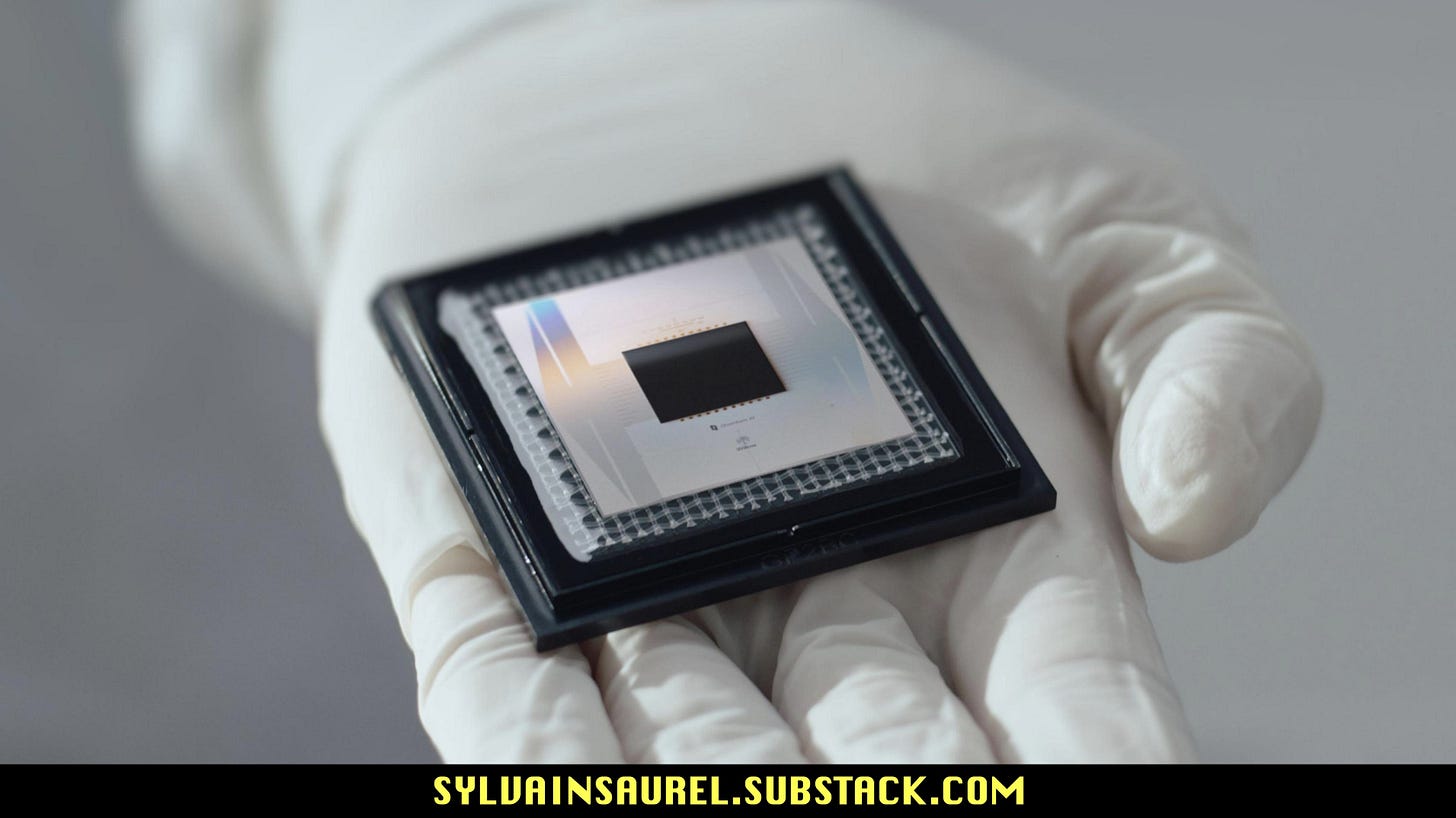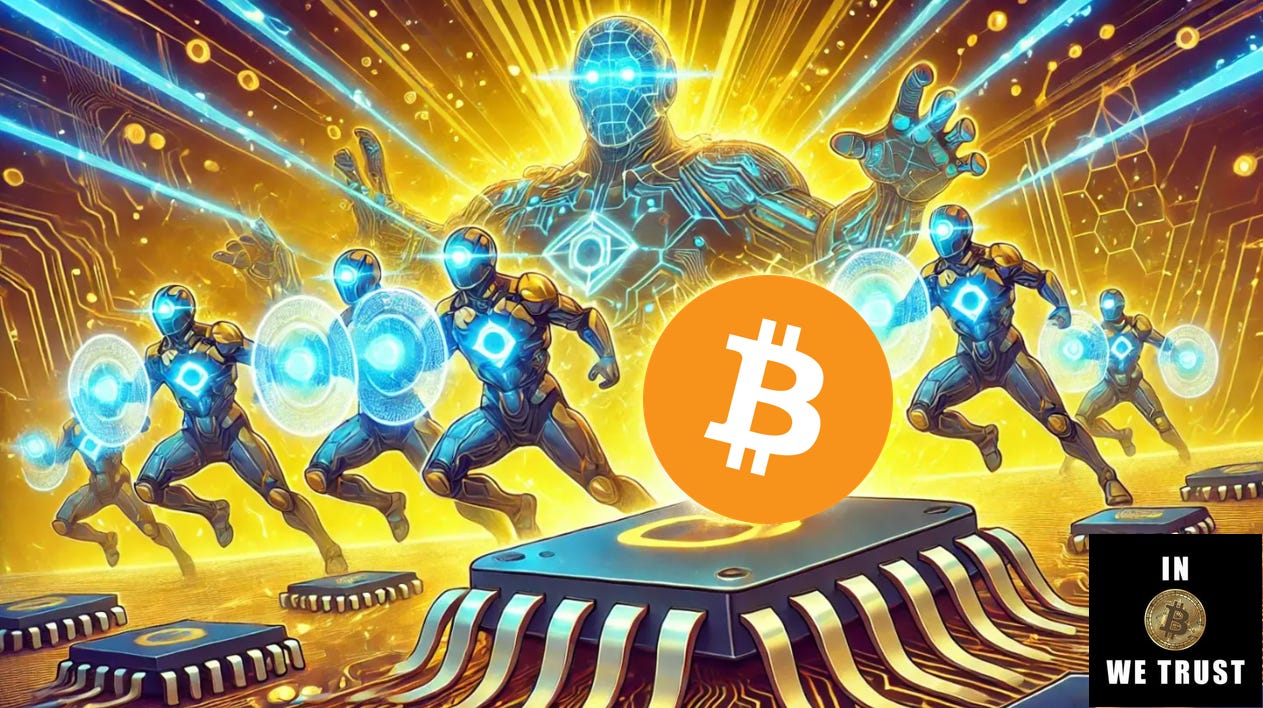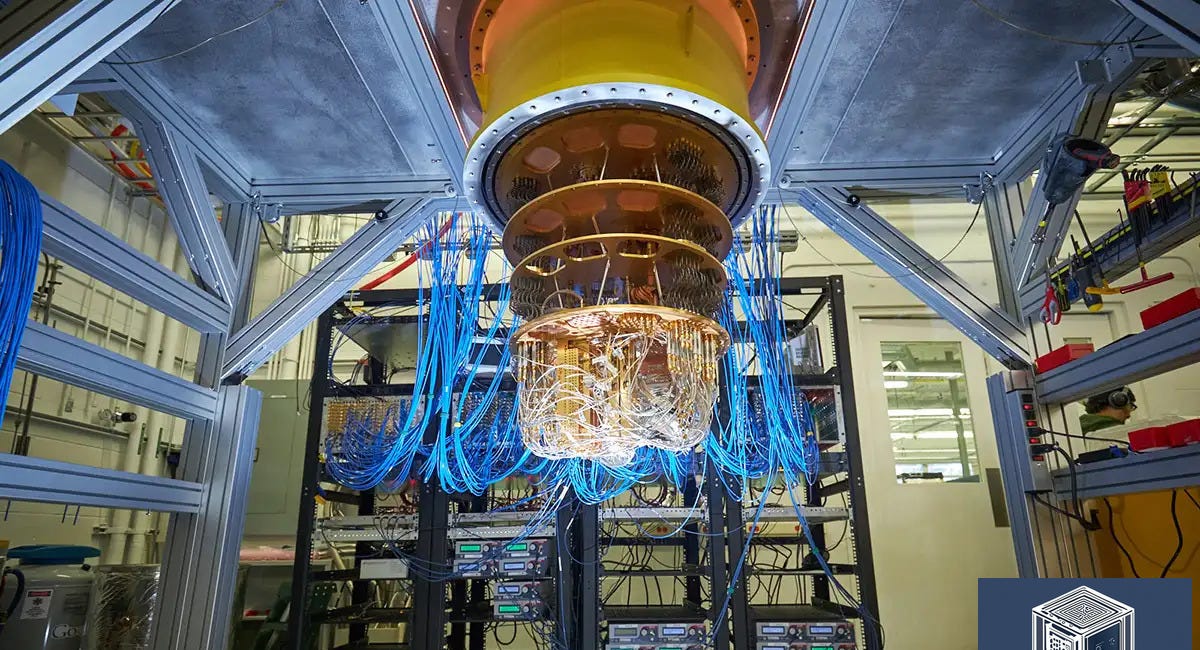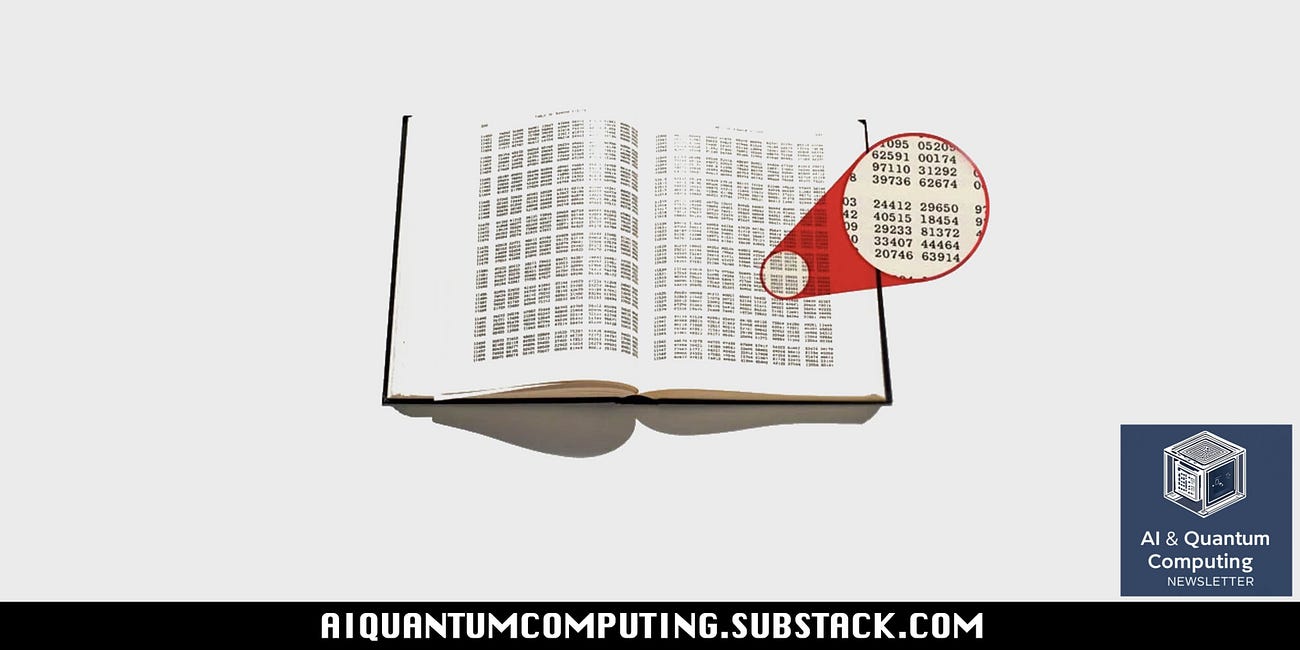The Day After Cryptography: How a Quantum Experiment Just Rang the Alarm Bell.
Shor's Algorithm Breaks 5-bit Elliptic Curve Key on 133-Qubit Quantum Computer.
I don't know if you've had time to see this, but a recent news story has shaken the world of cybersecurity with the subtlety of an earthquake. Researchers at Arizona State University, in collaboration with teams from IBM, have just pulled off something incredible: they used Shor's algorithm on a quantum computer to crack an Elliptic Curve Cryptography (ECC) key. It's a first. A real one. And even if the feat may seem modest at first glance, it represents a gaping crack in the fortress that protects our digital world. The implications for our future are staggering.
Now, before you go into full panic mode and start searching for the nearest paper bag, let me explain why this moment is both terrifying and fascinating.
Investing in This Industry Today Is Equivalent to Buying Bitcoin at $500 in 2013.
This opportunity is probably The Next Big Thing.
A “Small” Step for Man, a Giant Leap for Cryptanalysis
The team led by Jayanti Tippeconnic has therefore succeeded in breaking a 5-bit key. Yes, you read that correctly: 5 bits. That's equivalent to the security level of a rusty bike lock that you could open with a simple paper clip, especially when compared to the 256-bit keys that protect your Bitcoin transactions or WhatsApp communications.
So why all the fuss? Because it's not the size of the key that matters here, but the symbol. This is the first time that it has been proven concretely and experimentally that Shor's algorithm, the theoretical big bad wolf of modern cryptography, actually works on quantum hardware to attack elliptic curve cryptography. Until now, it was a theoretical threat, an equation on a whiteboard. Today, it's a tangible result. It's the difference between knowing that an asteroid exists and seeing it hit the Moon.
The experiment was conducted on the IBM_Torino quantum processor, a 133-qubit machine. To achieve this feat, researchers had to run a quantum circuit with a depth exceeding 67,000 layers. That's a mind-boggling number. To give you an idea, one of the biggest challenges in quantum computing is “decoherence”: qubits, the units of quantum information, lose their fragile state and magical properties after just a few microseconds due to the slightest disturbance. Completing such a complex and deep operation demonstrates that IBM engineers have made tremendous progress in the stability and error correction of their machines.
Shor, or the Bête Noire of Our Digital World
And now you're going to say to me, “But Sylvain, speak clearly, what's this Shor's algorithm business?” Well, believe it or not, it's been the bane of all cryptographers since 1994. That year, Peter Shor, a mathematician then employed by AT&T Bell Labs (and now a professor at MIT), published an article that had the effect of a bombshell. He designed an algorithm capable of performing a task that conventional computers cannot do efficiently: factoring very large numbers in record time.
Why is this so important? Because much of the security of our digital world (such as the famous RSA encryption) is based on a simple assumption: it is extremely difficult for a conventional computer to find the two prime numbers that, when multiplied, give a very large number. It is a problem that would take even the most powerful supercomputers billions of years to solve. Shor's algorithm, on the other hand, turns this unsolvable problem into a mere formality... on one condition: it must run on a quantum computer.
The problem (or opportunity, depending on your point of view) is that until now, quantum computers have been either too small or too unstable to do anything useful with this algorithm. The ASU experiment has just proven that this era is coming to an end.
The Quantum Arms Race Is On
So yes, I know, 5 bits versus 256 bits, it's no big deal. But the progression is exponential. According to the latest estimates from Google Research (and they know a thing or two about this), it would take less than a million physical qubits to break an RSA-2048 key, one of the current standards for internet security. This is a dramatic drop from the 20 million qubits estimated in 2019. For ECC-256 elliptic cryptography (the one that protects your favorite cryptocurrencies), we're talking about approximately 1536 logical qubits. A logical qubit is a perfect, error-corrected qubit that requires many physical qubits to function. The exact ratio depends on the quality of the machines, but the message is clear: the finish line is approaching much faster than expected.
And the tech giants are not sitting idle. IBM released its Condor processor at the end of 2023 with 1,121 qubits. Its competitor, Google, is not far behind with its 105-qubit Willow processor, but is focusing heavily on reducing the error rate. By 2025, IBM already plans to connect three of its future Kookaburra chips to create a 4,158-qubit system. The race is on, and the stakes are global.
When Wall Street and Spies Get Involved
If you think this is just geek talk, think again. BlackRock, the world's largest asset manager with more than $11 trillion under management, has officially included “quantum risk” in the regulatory filings for its Bitcoin ETF. In plain language, they are warning their investors that advances in quantum computing could eventually “compromise the viability” of the algorithms protecting Bitcoin. When money talks, it's time to listen.
But the most insidious and immediate danger lies elsewhere. It has a code name worthy of a spy movie: “Harvest Now, Decrypt Later.” The concept is simple and chilling. Malicious actors, whether state intelligence agencies or organized crime syndicates, are most likely copying and storing massive amounts of encrypted data that is currently transiting the internet. This data is currently unreadable, protected by mathematical fortresses. But these actors are betting on the future. They are accumulating these data treasures, waiting for the day when they will have access to a quantum computer powerful enough to decrypt everything.
Imagine. All your emails, WhatsApp messages, bank transactions, business secrets, and medical records from the last ten years are suddenly becoming readable like an open book. It's a ticking time bomb for privacy and national security.
Bitcoin: The Canary in the Quantum Coal Mine
The case of Bitcoin is particularly emblematic. It is estimated that around 25% of all Bitcoins in circulation, or nearly 4 million BTC (worth several hundred billion dollars), are stored in “vulnerable” addresses. These are mainly old addresses (P2PK type) for which the public key was revealed on the blockchain during a transaction. This includes Satoshi Nakamoto's war chest, estimated at around 1 million BTC. If a quantum computer equipped with Shor's algorithm were to be developed, it could derive the private key from the public key and seize these funds.
Fortunately, the Bitcoin community is not sitting idly by. A developer named Agustin Cruz has proposed QRAMP (Quantum-Resistant Address Migration Protocol), a complex protocol aimed at migrating all Bitcoins to new addresses that are resistant to the quantum threat. Such an operation would require a “hard fork”—a major and controversial update to the protocol—which would take considerable time to be accepted and deployed, given Bitcoin's cautious and decentralized governance. It is precisely for this reason that it is crucial that the community has begun to address the issue well in advance of the actual threat.
Bitcoin Facing the Quantum Apocalypse: Survival or Collapse?
Here’s an Overview of the Solutions Being Considered.
Other projects are already more advanced. The Algorand cryptocurrency, for example, has already integrated Falcon, a post-quantum signature algorithm validated by NIST (the US National Institute of Standards and Technology), as part of a broad global standardization project.
A Race Against Time for a Post-Quantum Future
So, should we unplug everything and go back to living in the woods? Not yet. Take a deep breath. Most experts agree that we still have a window of opportunity. A study by the Global Risk Institute estimates that there is a 27% chance that a quantum computer capable of breaking current cryptography will exist by 2034. That may seem far off, but in the world of digital infrastructure, it's tomorrow morning.
The year 2025 is widely considered to be the pivotal year when the migration to Post-Quantum Cryptography (PQC) must begin in earnest for critical organizations. The US government has even put its foot down by setting a deadline: 2035 for all federal agencies to migrate their systems to quantum-resistant standards.
PQC is our shield. It is a new generation of encryption algorithms that do not rely on the difficulty of factorization, but on other mathematical problems considered complex for classical and quantum computers. NIST is in the process of finalizing its standards, which will become the new global norm.
The Arizona State University team's achievement is therefore not the beginning of the end. It is the starting gun that officially launches the race. A race between quantum computer manufacturers and cryptographers. For the first time in history, we must change the foundations of our digital security, not because they have been broken, but because we know with almost absolute certainty that they will be.
The ticking of the quantum clock has begun. And it is now sounding much louder.
A Quick Look Back at the History of Quantum Computers.
With announcements in the field of quantum computing continuing to multiply in recent months, whether from Google, IBM, or Microsoft, I think it's interesting to look back at the first steps in the quantum world that have brought us to where we are today. It all started in 1900, as you will see, with Max Planck.
A Trapped-Ion Quantum Processor Generates the First "Truly Random" Number.
You've probably all waited for the expression “it's random” several times in your life. The phrase is frequently used to describe unpredictable situations, but true randomness, in physics as in mathematics, has long remained an elusive concept.
A Historic Turning Point for Quantum Computing? IBM Announces That It Has Overcome the Biggest Obstacle to Large-Scale Quantum Computing.
For years, we have been promised that consumer quantum computers are just around the corner. But for 30 years, it has been the same story: the finish line keeps getting pushed back. This time, however, it seems that the finish line may not be so far away, if IBM is to be believed.







Super article, Sylvain! Going to promote this is my next newsletter post.